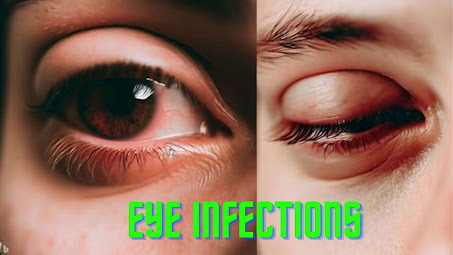Myth 1: Menstruation is dirty and Impure.
Scientific Fact: Menstruation is a normal bodily function and not dirty or impure. The menstrual flow consists of blood, tissue, and mucus from the uterus, and it is a sign of reproductive health. It is essential to promote positive and accurate information about menstruation to combat the stigma associated with it.
Myth 2: Physical activities should be avoided during periods.
Scientific Fact: While women may experience discomfort or pain during their periods, physical activity is generally safe and can even help alleviate symptoms. Exercise stimulates the release of endorphins, which can reduce menstrual pain and boost mood. However, it is crucial to listen to your body and adjust the intensity and type of exercise based on individual comfort levels.
Myth 3: Menstrual blood attracts animals or causes spoilage.
Scientific Fact: Menstrual blood does not attract animals or cause spoilage. This myth may have originated from cultural beliefs rather than scientific evidence. Menstrual blood is biologically similar to other forms of blood and does not possess any extraordinary properties.
Scientific Reasons for Problems Faced by Women:
Menstrual Cramps: Menstrual cramps, or dysmenorrhea, occur due to the release of prostaglandins, hormone-like substances that cause the uterus to contract. These contractions can lead to pain and discomfort. Over-the-counter pain relievers, heat therapy, and relaxation techniques can help alleviate menstrual cramps.
Heavy Menstrual Bleeding: Medically known as menorrhagia, heavy menstrual bleeding can be caused by hormonal imbalances, uterine fibroids, or certain medical conditions. Consultation with a healthcare professional is recommended to evaluate the underlying cause and explore treatment options.
Premenstrual Syndrome (PMS): Hormonal fluctuations during this time can cause mood swings, bloating, breast tenderness, and fatigue. Lifestyle changes, such as regular exercise, a balanced diet, and stress management techniques, can help alleviate PMS symptoms.
Some Precautions during Periods in Different Regions:
Western Countries: In many Western countries, there is a growing movement to destigmatize menstruation and promote open conversations. Menstrual products like tampons, pads, and menstrual cups are widely available. Women often practice good hygiene by changing menstrual products regularly, washing hands before and after handling products, and maintaining personal cleanliness.
Asian Countries: In some Asian countries, there are cultural beliefs and practices surrounding menstruation. Women may face restrictions, such as avoiding certain foods or refraining from religious rituals. Educating communities about menstrual health and challenging these restrictions is crucial to empower women and promote their well-being.
African Countries: In parts of Africa, cultural taboos and limited access to menstrual hygiene products can pose challenges for women. Initiatives focusing on menstrual hygiene management, providing affordable and sustainable menstrual products, and educating communities can help overcome these barriers and ensure menstrual health.
What should avoid during periods?
During your menstrual period, it's a good idea to avoid certain foods and habits that can exacerbate symptoms and discomfort. Here's what you might consider avoiding:
1. Excessive Caffeine: While a moderate amount of caffeine might be okay, excessive caffeine intake can worsen anxiety, irritability, and breast tenderness. It can also contribute to dehydration.
2. Sugary and Processed Foods: Foods high in sugars and unhealthy fats can lead to mood swings, energy crashes, and worsened inflammation.
3. Salty Foods: High-sodium foods can cause water retention and bloating, making you feel more uncomfortable.
4. Dairy Products: Some individuals experience worsened bloating and cramps due to dairy products. Consider opting for alternatives like plant-based milk.
5. Fatty Foods: Fried and greasy foods can increase inflammation and may worsen digestive issues.
6. Alcohol: Alcohol can disrupt hormone balance, worsen mood swings, and contribute to dehydration.
7. Overeating: Overeating can exacerbate bloating and discomfort. Aim for smaller, balanced meals throughout the day.
8. Intense Workouts: While light exercise can help alleviate cramps, intense workouts might increase discomfort. Listen to your body and opt for gentler activities if needed.
9. Stress: Stress can intensify period symptoms. Engage in relaxation techniques such as deep breathing, meditation, or gentle yoga.
10. Tight Clothing: Tight clothing, especially around the waist, can worsen bloating and discomfort.
Note: Individual responses can vary. It's important to tune into your body and observe how certain foods and habits affect you during your period. Maintaining a balanced diet, staying hydrated, and practicing self-care are key components of managing your menstrual health. If you have severe symptoms or concerns, consult a healthcare professional for guidance.
Disadvantages of Using Cotton and Plastic Pads
Disadvantages of Cotton Pads:
Limited Absorbency: Cotton pads may not be as absorbent as other materials, which means they may need to be changed more frequently.
Leakage: Due to their limited absorbency, cotton pads may be prone to leakage, especially during heavy flow days.
Staining: Cotton pads are more likely to stain, and removing these stains can be challenging.
Uncomfortable When Wet: When soaked with menstrual fluid, cotton pads can become heavy, wet, and uncomfortable.
Drying Time: Cotton pads may take longer to dry after washing, which can be inconvenient if you need to reuse them quickly.
Disadvantages of Plastic Pads:
Non-Biodegradable: Most plastic pads are made from synthetic materials like polypropylene and polyethylene, which are not biodegradable and contribute to environmental pollution.
Heat and Sweat: Plastic pads can trap heat and moisture, leading to discomfort and potential irritation.
Chemical Exposure: Some plastic pads may contain chemicals like dioxins, fragrances, and dyes that can cause skin irritation or allergic reactions in some individuals.
Landfill Waste: Since plastic pads do not biodegrade, they contribute to landfill waste and have a negative impact on the environment.
Breathability: Plastic pads are less breathable compared to natural materials like cotton, which can contribute to discomfort and increased risk of infections.
It's important to note that there are various alternatives available in the market, such as organic cotton pads, reusable cloth pads, and menstrual cups, which aim to address some of these disadvantages and provide more sustainable and comfortable options for menstrual hygiene.








.jpg)




Comments
Post a Comment